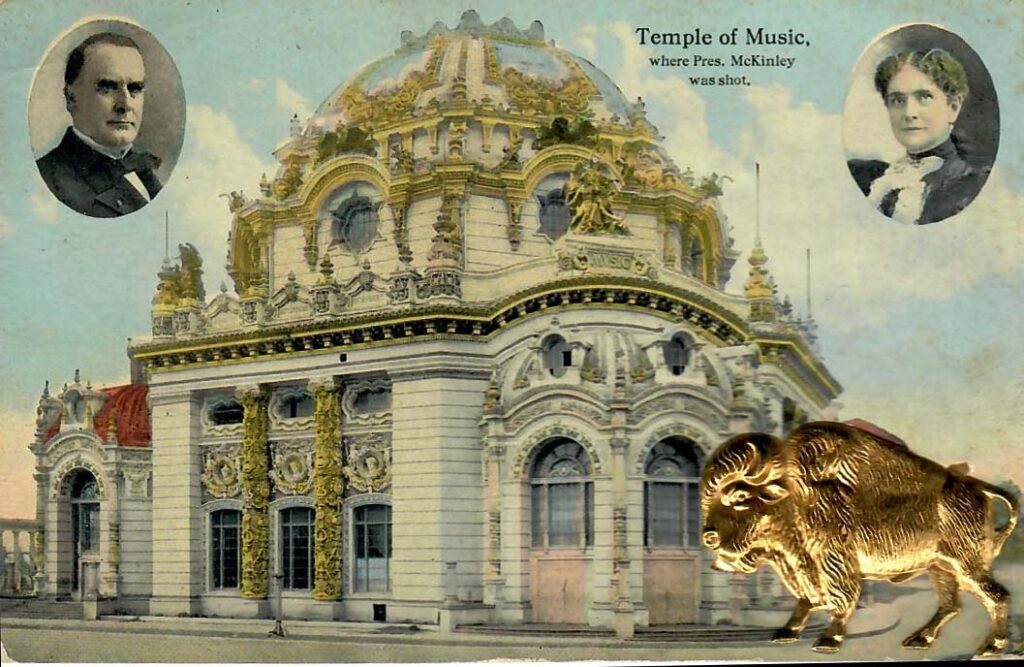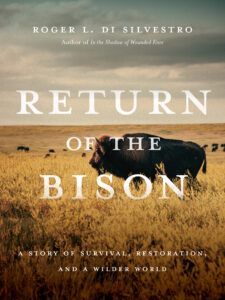From Shelf Awareness Pro, 29 June 2023 Review: Return of the Bison: A Story of Survival, Restoration, and a Wilder World

Return of the Bison: A Story of Survival, Restoration, and a Wilder World by Roger L. Di Silvestro (Mountaineers Books, $21.95 paperback, 256p., 9781680515831, September 1, 2023)
Review by Julia Kastner, from Pagesofjulia.com

With Return of the Bison: A Story of Survival, Restoration, and a Wilder World, naturalist Roger L. Di Silvestro (Theodore Roosevelt in the Badlands) chronicles the history of an iconic species. This exhaustively researched text briefly describes the bison’s early massive proliferation across the North American continent, humans’ heavy pursuit of them, and their near extinction as a result. But it begins in earnest with the earliest conservation efforts, in the 1880s, through the present. Di Silvestro outlines the stories of the American wood bison (western Canada and Alaska) and the European bison, or wisent, but his focus rests chiefly on the American plains bison, which until the late 1800s covered much of North America in the kinds of extraordinary numbers also associated with the now-extinct passenger pigeon. While the bison population has recovered from just a few hundred into the low hundreds of thousands (most of those in commercial herds), its fate is far from secure; in fact, according to some biologists, the bison is already ecologically extinct (“its numbers are so low, so scattered, that it no longer fulfills any ecological role”). The lessons of this story apply to the conservation of other megafauna worldwide, including giraffes, elephants, rhinos, and wildebeest.
Di Silvestro writes with passion about the loss to biodiversity and ecosystems represented by the near-death of a keystone species, as well as the damage to Native American cultures, which have historically been closely tied to the bison’s massive herds. He also considers wild human characters, including Theodore Roosevelt, John Lacey, George Bird Grinnell, William T. Hornaday, and Charles Goodnight. The bison’s tale is poignant, infuriating, inspiring, and hopeful–and perhaps, above all, complicated, involving intricacies of both human and natural histories. At just over 200 pages, Return of the Bison feels longer, dense as it is with detail, such as the bison’s fluctuating population numbers on various tracts of land, the perils of genetic diversity in small herds, human intolerance, cultural clashes, and evolving concepts of and trends in wildlife conservation. This is not only a narrative of the bison; Di Silvestro is concerned with the story of “the first large mammal subjected to recovery efforts” and what lessons this unprecedented battle has for other similar attempts.
Return of the Bison is a thorough, impassioned, expert account of a specific conservation effort over the past 150 years and the questions that will continue to face those who care about wildlife and human impact on the natural world. “The saga of the bison is still an unfurling epic”–and one to watch. —Julia Kastner, librarian and blogger at pagesofjulia
Shelf Talker: With fervor and meticulous research–and with implications for the future of megafauna around the world–Roger L. Di Silvestro recounts the complex and difficult ongoing struggle for bison recovery.